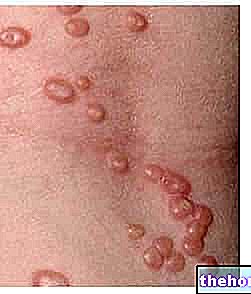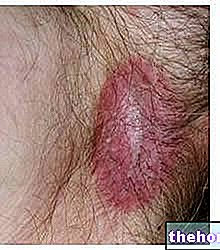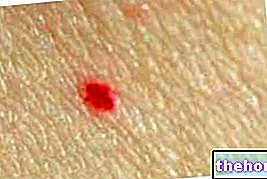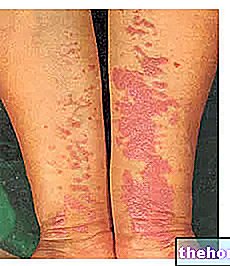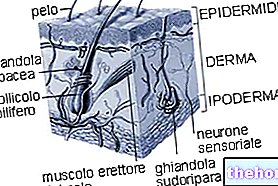Definition of keloid
Keloids are scar lesions that grow beyond the boundary of a skin lesion: therefore, starting from an abrasion or a wound, keloids develop a much wider and more extensive scar than the original damage.

- Let us briefly recall that the richly vascularized granulation tissue is made up of fibroblasts, myofibroblasts, inflammatory cells and ECM (extracellular matrix).
The presence of one or more keloids on the skin is often observed in subjects between the ages of 10 and 30, especially among Hispanics, African Americans and Asians. Despite this, keloids can still appear in people of all ages.
Curiosity
The curious term "keloid" derives from a Greek word χηλή (chele) which, in Italian, literally means "similar to the claws of the crab": in fact, the solid consistency and the spongy aspect of the keloid form a sort of relief pattern on the skin, similar to the claws of a crab.
Causes
We have seen that keloids are extensive and abnormal scars that can originate from an initial skin trauma. The main accused are undoubtedly ear piercings, very serious acne lesions, burns and surgical wounds (typical examples are keloids that arise in correspondence with a caesarean section). Sometimes, some keloids can also be observed in the areas that have been vaccinated or where small chickenpox scars have remained.
Did you know that ...
The term "keloidosis" is used to replace "keloid" when such scar lesions are very numerous (eg keloid scars caused by "severe acne) or recurrent.
But why and how does a keloid form?
These scar lesions are mainly due to an "excessive and unregulated proliferation of fibroblasts in the deep dermis, which produce abnormal quantities of collagen: the overproduction of collagen, in turn, gives a solid consistency to the scar.
Risk factors
With the same injuries and trauma, some people develop keloids more quickly (or more noticeably). Starting from this assumption, it is believed that keloids can be influenced by some risk factors, listed below:
- Severe acne
- Alteration of the subject's immune function
- Abnormal response to a skin lesion
- Deficiency or excess of melanotropic hormone, used for the synthesis and distribution of melanin granules in melanocytes
- Dysfunctions in the extracellular matrix which controls the activity of the growth factor
- Familiarity
- Folliculitis of the beard and nape of the neck
- Blood vessels too small. By being blocked, the small blood channels are unable to exchange oxygen effectively; consequently, following a traumatic injury to the skin, it encourages the formation of keloids.
Signs and symptoms
The greatest damage correlated to the presence of keloids is given by their appearance: in fact, many patients resort to a pharmacological / alternative treatment to cancel the lesions concerned that they may disfigure their image in a more or less evident way. In addition to being clearly unsightly, keloids can cause discomfort, itching, tenderness to the touch or hypersensitivity of the skin where they develop.
Most keloid lesions grow irregularly for weeks or months; in some cases, growth can continue for many years. At the end of development, the keloid stabilizes without however regressing spontaneously: the natural disappearance of these lesions is a rather unlikely event.
How they present themselves
At the initial stage, the keloid looks like a simple raised scar: the lesion has a smooth, hairless (hairless) and translucent surface. At this stage, keloid lesions have a deep red color because they are extremely vascularized.
Subsequently, the scar begins to extend and to reveal itself, clearly exceeding the limits of the initial lesion: now, the keloid shows a rosy color and its consistency becomes increasingly thick and rubbery.
On the surface, the keloid has no hair follicles or sweat glands.
Although keloids can appear in any area of the skin affected by bruises or wounds, some areas of the body appear to be more sensitive. In fact, keloid lesions are most often observed in the deltoid region (shoulder), at the level of the sternum and in the upper back. The earlobes and the back of the neck are also common targets for keloids.


